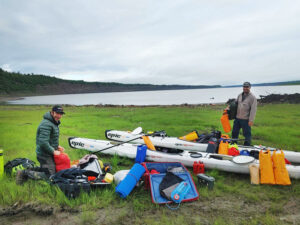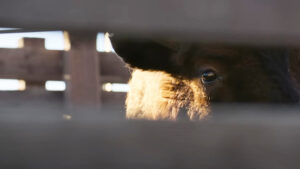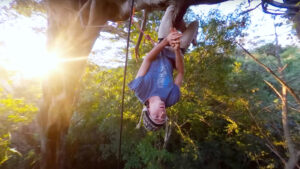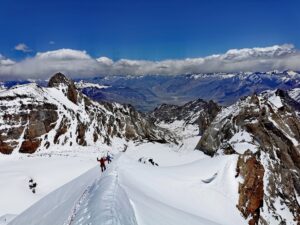Westerners may best know Nepal for its high peaks, rugged pilgrim paths, and mystique amplified by decades of pop-culture fascination. But there’s another side to Nepal that many outsiders never think about.
The country’s rivers.
The Everest of western Nepal
The prodigious snow and steep mountain flanks that cover Nepal also give rise to some of Asia’s most sacred and beautiful waterways. One of them, the Karnali River, is Nepal’s longest free-flowing river.
But it might not remain that way for long. A proposed hydroelectric dam would bring much-needed electricity to Nepalese people up and down the rugged river’s banks. But the resulting upstream reservoir and reduced flow downstream could be an ecological disaster, not to mention harm the country’s burgeoning whitewater paddling tourism industry. It’s a complex puzzle centered around — as one expert early in the documentary The Tears of Shiva put it — “The Everest of western Nepal.”

Portaging around some dangerous rapids. Photo: Screenshot/The Tears of Shiva
To explore this conundrum, the Nepal River Conservation Trust (NRCT) sponsored a whitewater expedition down one of the Karnali’s wildest sections. A four-man team comprised of Aniol Serrasolses, Mikel Sarasola, Todd Wells, and Nepalese local Surjan Tamang became only the second group to send that portion of river. The last folks who ran it successfully did so in the mid-1990s.
But first, our heroes had to get to the put-in, a feat which required hauling kayaks by plane, truck, yak, and old-fashioned muscle power.
And that was the easy part.

Photo: Screenshot/The Tears of Shiva
Running the Karnali
The Karnali’s upper sections are replete with unforgiving gorges and wall-to-wall class IV and V whitewater. And in expedition whitewater kayaking, the boats are heavily laden with gear and supplies, making them harder to control. Rescue along the remote river corridor is all but impossible. In short, the margin for error is zero.

Photo: Screenshot/The Tears of Shiva
But this group is skilled and experienced, and they navigate the nine-day maelstrom mostly successfully. But as they grow increasingly exhausted, errors start to accumulate. Wells gets pinned on a rock and has to bail, and then the team has to figure out a way to free his swamped boat from the river’s brute force.

Photo: Screenshot/The Tears of Shiva
Later, one of the team’s boats develops a crack, necessitating a dicey fix involving melted plastic and duct tape.

Photo: Screenshot/The Tears of Shiva
“Day nine. Floating down into the lower section. It’s been a really long nine days. Just getting to the easy section now, but this river has destroyed us in many ways,” Serrasolses says to his GoPro toward the end of the film. The bags under his eyes are clearly visible.
“We feel tired, but we feel very thankful and happy to have had the opportunity to come to this place to paddle for so many days of a free river,” he continues. “Just nature, good people, an amazing river that flows freely.”
To dam or not to dam
It’s a sentiment that’s easy for non-natives to express and certainly one shared by the locally run NRCT. But the special thing about The Tears of Shiva is the short interviews the expedition conducted with locals along the way. These interviews make it quite clear that a hydroelectric dam would dramatically improve the lives of the people living near the Karnali. Kudos to the filmmakers for not shying from the complications that often lurk behind seemingly black-and-white conservation issues.
As the film wraps, there’s a hint of resolution. An expert suggests a compromise — damming the Karnali’s upper tributary streams instead of the mighty river itself to reduce the impact further downstream.
What will end up happening is anyone’s guess. But one thing’s for sure. The Tears of Shiva is at once a rousing, old-school adventure film and a more modern, considerate take on the genre.






